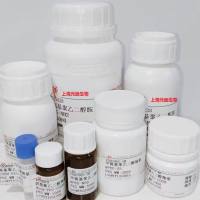Determination of CYP4A11-Catalyzed Lauric Acid 12-Hydroxylation by High-Performance Liquid Chromatography with Radiometric Detection
互联网
844
The human CYP4.411 gene encodes a P450 protein that has been isolated from human kidney (1 , 2 ) and liver (3 ) and purified to apparent homogeneity. CYP4All mRNA is present in greater abundance in kidney than in liver, whereas it is absent in lung (3 ). Various fatty acids, including lauric acid (2 –4 ), are substrates for recombinant CYP4Al l. Experiments with a panel of individual cDNA-expressed P450 enzymes indicate that CYP4Al l is a major lauric acid 12-hydroxylase (5 ). Immunoinhibition experiments with heterologous and antihuman CYP4Al l antibodies have further established that CYP4Al l contributes a major fraction of the lauric acid 12-hydroxylase activity in human liver microsomes (3 , 5 , 6 ). Accordingly, microsomal lauric acid 12-hydroxylase activity is used as a marker for human hepatic CYP4A11. Although CYP4A11 is a major lauric acid 12-hydroxylase in human liver, lauric acid 11 -hydroxylation in this tissue is catalyzed by CYP2E1 and not CYP4A11 (7 , 8 ). Several analytical methods are available for the quantification of 12-hydroxylauric acid, including the use of nonradioactive lauric acid as the substrate by a highperformance liquid chromatographic (HPLC) assay with fluorescence detection (9 , 10 ). This chapter describes a radiometric HPLC assay for the determination of lauric acid 12-hydroxylase activity.





![DKFZ-PSMA-11,4,6,12,19-Tetraazadocosane-1,3,7-tricarboxylic acid, 22-[3-[[[2-[[[5-(2-carboxyethyl)-2-hydroxyphenyl]methyl](carboxymethyl)amin](https://img1.dxycdn.com/p/s14/2025/1009/171/0405943971658126791.jpg!wh200)



